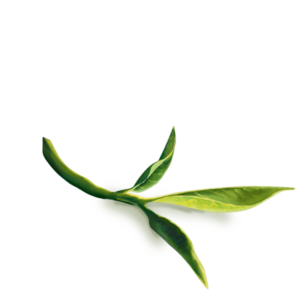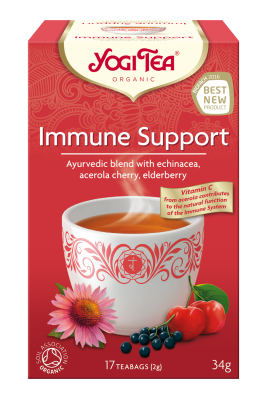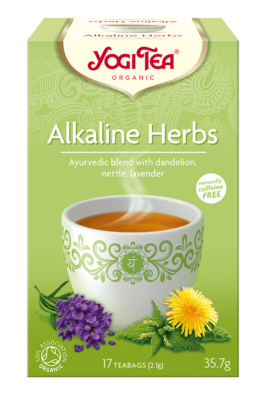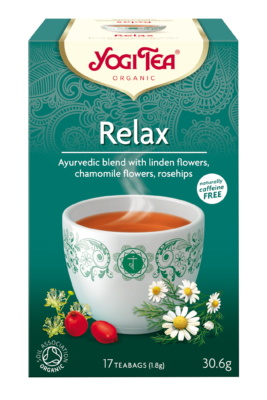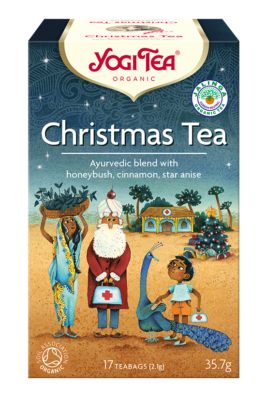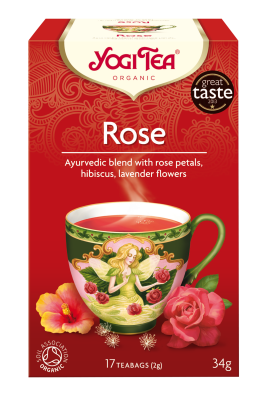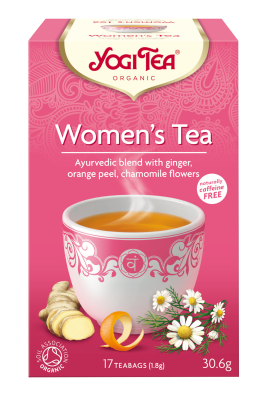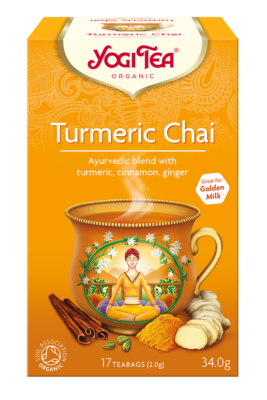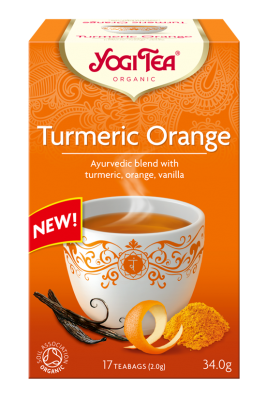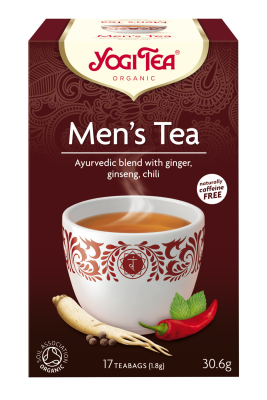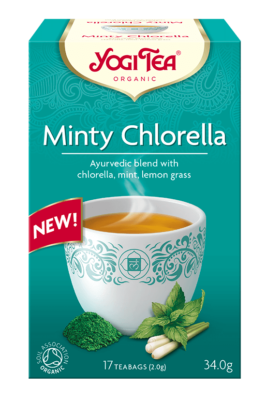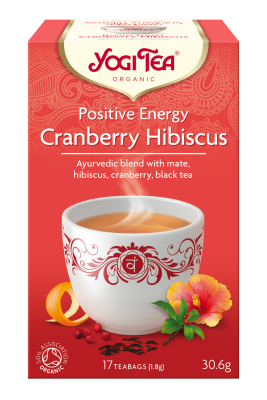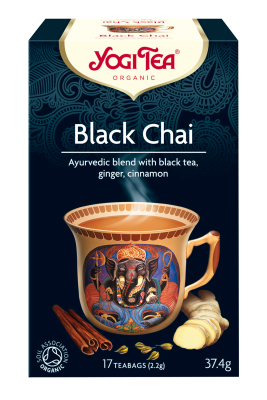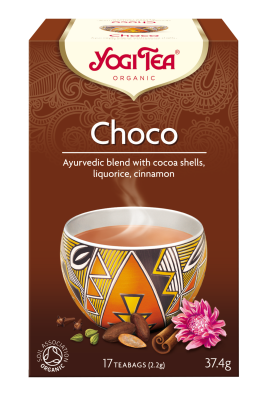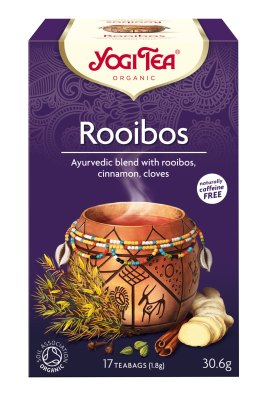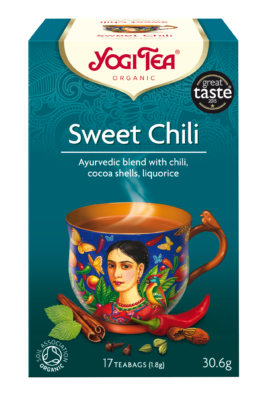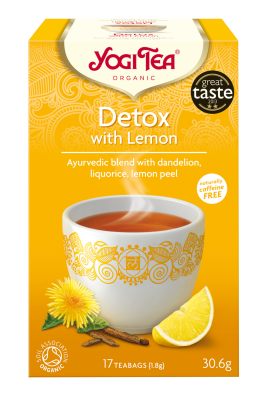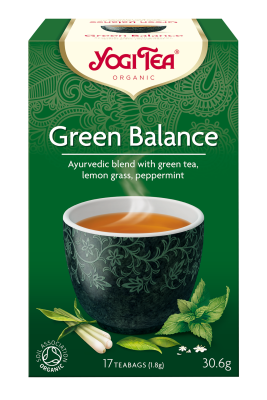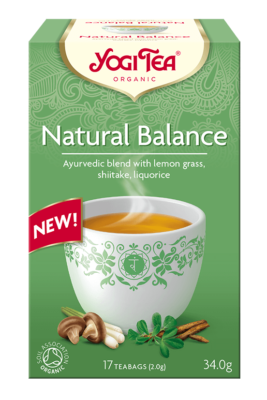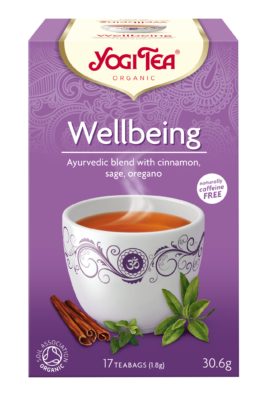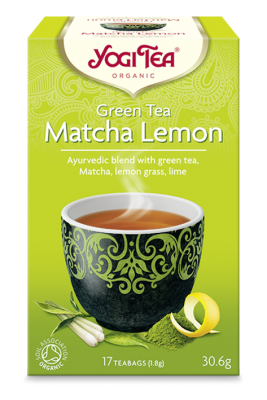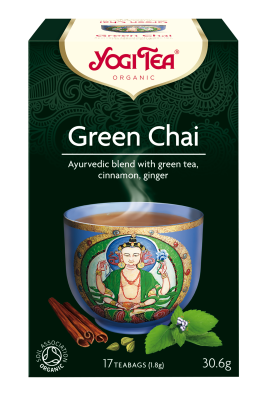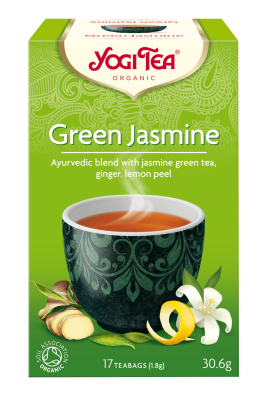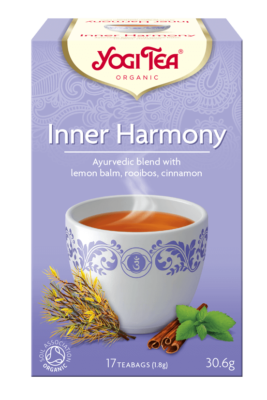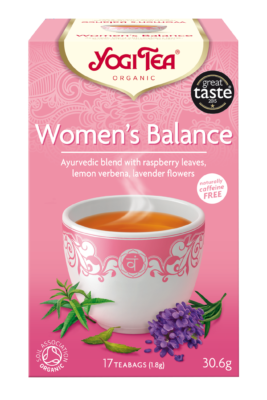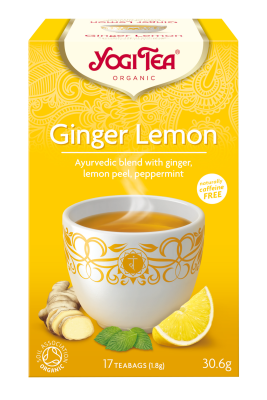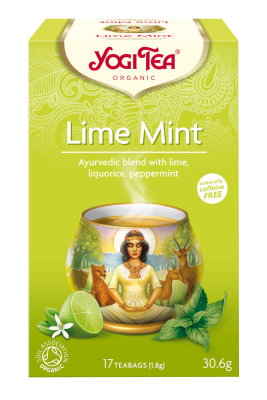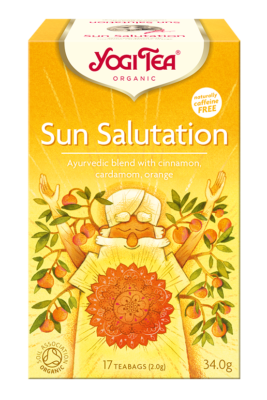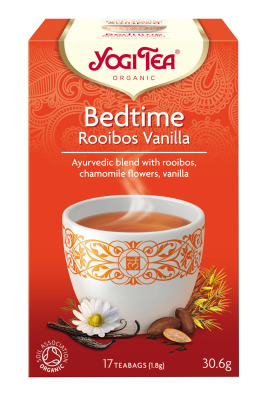Ingredients
A
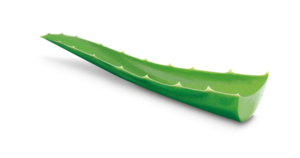
Aloe vera
It grows primarily in desert areas and was supposedly already taken along on journeys by Columbus: the subtly tart aloe vera with its slightly nutty taste. Its typical strong, jagged leaves are a well-known feature. They store so much water that the "lily of the desert" can go for months without rain.We use aloe vera in
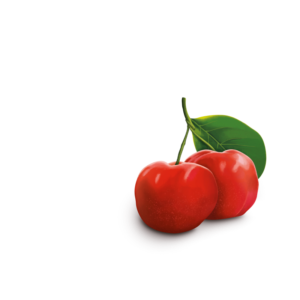
Acerola
Bright red: This is the acerola cherry. The finely tart and fruity-fresh tasting fruit primarily thrives in South America and Jamaica – in ravines, on riverbanks and mountain slopes or at the edges of streets. Its fruit pulp is especially juicy and has a fluid content of up to 80%.We use acerola in
Alfalfa
Alfalfa is the Arabian word for the "father of all food". Its flowering season is from June to September. The taste is subtly nutty and aromatic-spicy.We use alfalfa in
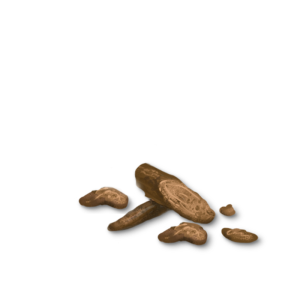
Angelica root
Angelica, which belongs to the umbellifer family, grows at rivers and lakes and in moist meadows. Bees love its aromatic smell, and human beings value it for its sweetish-bitter taste. In some areas, the angelica root is also known under name of archangel.We use angelica root in
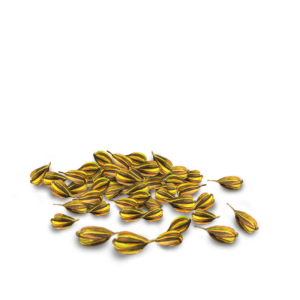
Anise
This annual plant thrives in Asia and the southeastern part of the Mediterranean. People have revered its sweetish tasting fruit for thousands of years. In earlier times, anise was sacrificed to the gods. Now it is found in cakes and Christmas biscuits, as well as a delicious spice in many YOGI TEA®s.We use anise in
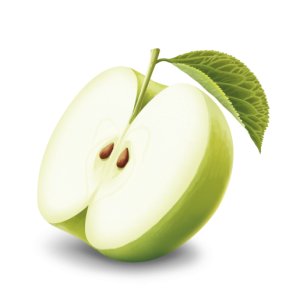
Apple
Like no other fruit, the apple is a symbol for life, fertility and wealth in mythology. Growing to a height of 15 metres, the apple tree originally came from Asia. Now it can be found around the globe in more than 2,000 different varieties.We use apple in
Astragalus
The plant called astragalus in the West is known in China under the name of Huang Qi. The literal translation means the "Yellow Emperor" and accordingly reflects the significance of the plant for human beings.We use astragalus in
B
Baobab
Baobab, also known as the monkeybread tree, originated in the African savannah. The oldest living specimens are over 1,000 years are regarded as Africa’s most characteristic tree. In its appearance, the sweet and sour fruit of the baobab tree resembles a cocoa pod, though flavour-wise it is somewhat fruity and tart.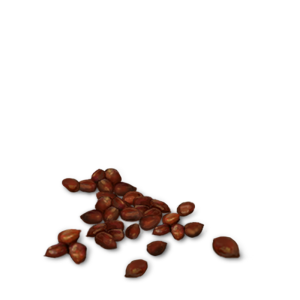
Barley malt
Barley belongs to the grass family. It is indigenous to the Middle East and the eastern part of the Balkans. In earlier times, barley malt was the only known sweetener – it tastes pleasantly malty and slightly like caramel.We use barley malt in
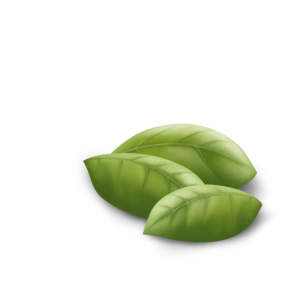
Basil
This "royal plant", as the Ancient Greeks called basil, came to northern Europe in the 12th century. It has a wonderfully spicy aroma, which is ideally featured in both Mediterranean cuisine and freshly brewed tea.We use basil in
Beetroot
The red beet is an ancestor of the wild turnip and was introduced to Central Europe by the Romans. Visually, the red beet certainly lives up to its name: The strong dark-red plant tastes subtly sweetish, slightly bitter and mild-earthy.We use beetroot in
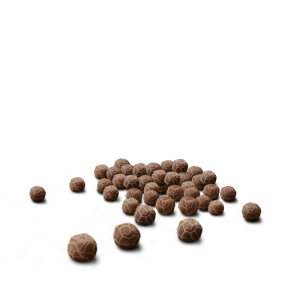
Black pepper
Also called the "king of spices," black pepper is one of the world's most important spices in addition to salt. It originally came from the Indian Malabar Coast and tastes intensive-spicy, ranging from slightly spicy to quite spicy.We use black pepper in
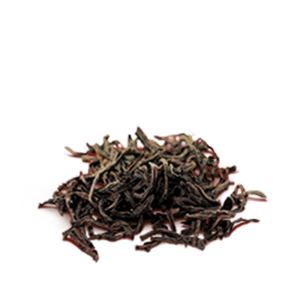
Black tea
Black tea, the leaves of which are fermented in contrast to green tea, was already a customary element of Asian tea culture centuries ago. It is now one of the most popular types of tea throughout the world. Due to its high caffeine content, it is frequently seen as an alternative to coffee. Black tea has a pleasantly bitter and aromatic taste.We use black tea in

Black tea (Assam)
The region of the same name in northern India is where the famous Assam tea thrives. It is exclusively picked by hand and has a soft, malty-sweet character. Its powerful-exotic taste makes it one of the most frequently consumed types of tea in the world.
We use black tea (Assam) in
Buckhorn
The buckhorn is a leafy plant that is at home in many parts of the world. It prefers to grow in meadows and at waysides. The taste of the buckhorn is slightly salty and somewhat bitter.We use buckhorn in
Burdock root
The burdock is a plant of the asteraceae family. It grows at the edges of the forests and on the fields. The roots of the burdock are gathered in the autumn of the first growth year and taste semi-sweet.We use burdock root in
C
Caraway
Caraway is one of the oldest spices at all. Already more than 5,000 years ago it was cultivated in the Mediterranean region and western Asia, and nowadays exudes its intense, spicy scent even in remote areas of Siberia.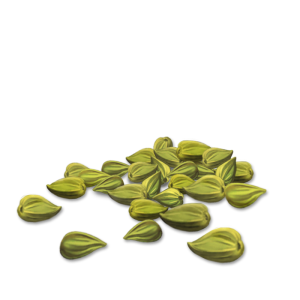
Cardamom
Cardamom has been one of the most popular spices for thousands of years throughout the entire Asian and Arabian area. Its subtle, sweetish-spicy aroma predestines cardamom for use in many different foods ranging from sharp curries to spicy Christmas biscuits.We use cardamom in
Carob
Indigenous to the Mediterranean area and Asia, carob is a plant from the legume family. The long, brown fruit of the carob tree - which grows up to a height of 18 metres - taste sweetish and carry seeds that each weigh precisely 0.197 grams. Due to this special characteristic of nature, carob seeds were used as the measuring unit for diamonds in antiquity.We use carob in
Carrot
Everyone is familiar with carrots. Charlemagne already recommended their cultivation, and now almost every country in the world has the orange-coloured root in its diet. Its slightly sweetish taste gives tea a very special touch.We use carrot in
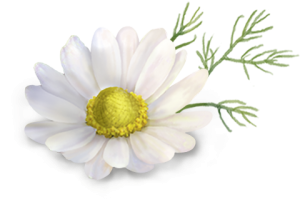
Chamomile flowers
It was sacred for the Teutons and the flower of Sun God Ra for the Egyptians: the white feathered chamomile with its brilliant yellow petals. Chamomile is an herbaceous plant, the typical fragrance of which everyone knows. Its flowers taste slightly bitter and pleasantly mild.We use chamomile in
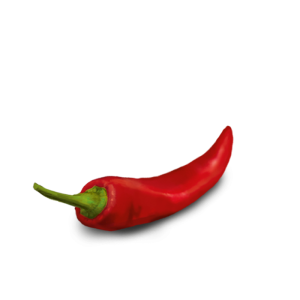
Chili pepper
Chili peppers are annual plants of the nightshade family that primarily thrive in sunny countries such as Mexico, India, Thailand and Tanzania. Their natural pungency has made them one of the most popular spice plants in the world.We use chili peppers in
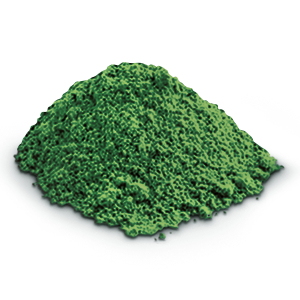
Chlorella
Chlorella algae have existed for over 2 million years and are therefore among the oldest plants on our planet. Chlorella grows in fresh water and its Latin name means ‘small, fresh green thing’. Today it is known to many people as a “superfood”, whose intense flavour is reminiscent of strong green tea.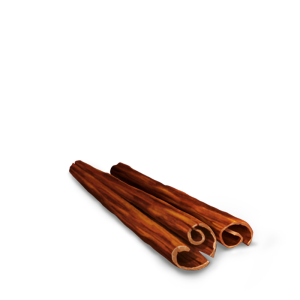
Cinnamon
Cinnamon is among the most expensive spices in the world and was supposedly already used as a spice in China in 3,000 B.C. Cinnamon is extracted from the bark of the South-Asian cinnamon tree. It has an aromatic-sweetish taste and contains valuable essential oils.We use cinnamon in
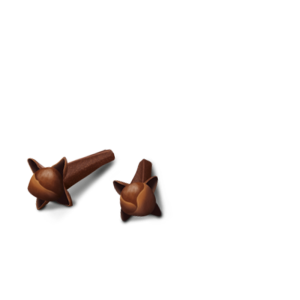
Cloves
Cloves are the flower buds of the clove tree and primarily familiar as a spice for both sweet and salty food in the European part of the world. They belong to the myrtle family and have an intensive spicy aroma. They were even worth their weight in gold in both old China and Egypt.We use cloves in
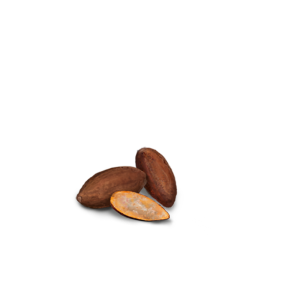
Cocoa shells
The cocoa tree, which originally came from the Latin American rainforest, is primarily famous for its beans – the basic raw material of chocolate. But the shells of the cocoa bean fruit are also bursting with a sweetish-soft aroma and contain much fewer calories.We use cocoa shells in
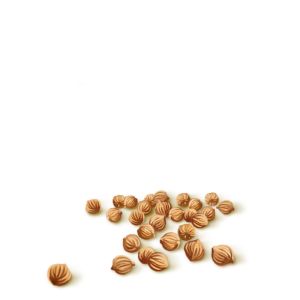
Coriander
In the Middle East and Asia, the slightly sweetish tasting coriander is used in almost every dish, presumably due to its splendid aroma that is reminiscent of a spicy-savoury mixture of cinnamon, nutmeg and orange.We use coriander in
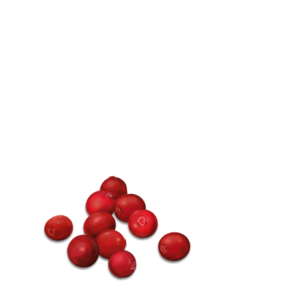
Cranberry
The cranberry belongs to the heather family and is indispensable for every Thanksgiving menu in the USA. Yet, the red radiant berries are also found increasingly in the cuisine of many different countries. They taste tart-sour and pleasantly fruity.We use cranberries in
Chicory (roasted)
The chicory is also known under the name of blueweed because its sky-blue flowers prefer to grow at the wayside. The flowers of the plant from the asteraceae family, which is native to Europe, northwestern Africa and western Asia, open for just one single day. Its roots taste spicy-tart and give herbal tea mixtures a touch of coffee taste – but without the caffeine.We use roasted chicory in
D
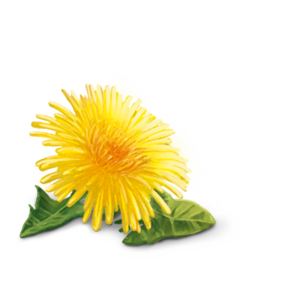
Dandelion
Dandelion is among the best-known and most widespread wild plants. It thrives almost anywhere that allows it to sprout its bright yellow composite in the direction of the sky. Its leaves taste extremely aromatic: Subtly tart and slightly bitter, they are excellently suited for salads and smoothies. They are obviously also appropriate for delicious teas.We use dandelion in
E
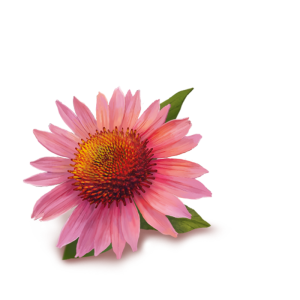
Echinacea
Echinacea is a plant that grows wild in North America and has long been valued by Native Americans. It attains a height of 90 cm and has purple leaves. Echinacea tastes slightly sweetish and tart-spicy.We use echinacea in
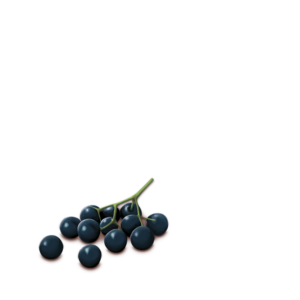
Elderberries
Elderberries were already found in the human diet more than 6,000 years ago. When cooked, the black shiny fruit is excellently suited for desserts and juices. This naturally also applies to tea. They taste tartly sweet and fruity.We use elderberry in
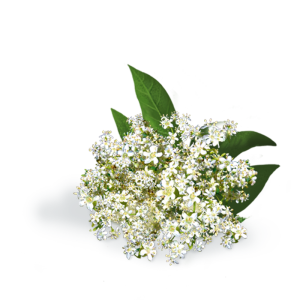
Elderflowers
Also known as the elderberry bush, the elder has been considered a "magic tree" since time immemorial. There are now elderberry bushes throughout all of central Europe. They can be recognised in spring by the striking white flowerage and the familiar black shiny berries in autumn. The flowers of the elderberry taste delicately sweet and pleasantly mild.We use elderflowers in
Elecampane
Originally from Asia, the elecampane was a solid component of every farm garden in earlier times. Already in the fourth century, the Roman cook Apicius wrote in his recipe collection called De re coquinaria that this plant is a necessity in every household: "So that nothing is missing when seasoning." Elecampane belongs to the asteraceae family and prefers to grow in moist meadows and fields. Its aromatic roots taste slightly bitter and exude a pleasant fragrance.We use elecampane in

Eucalyptus
The name eucalyptus refers to the species of more than 600 different trees and bushes. We use the aromatic leaves of the eucalyptus globulus, a tree native to Australia that grows up to 60 metres in height. They taste refreshingly tart and slightly bitter.We use eucalyptus in
F
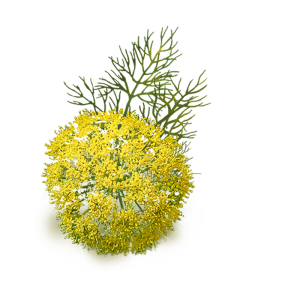
Fennel
Fennel belongs to the umbellifer family and has been popular for thousands of years around the globe due to its intensive aroma. It originally came from the Mediterranean region. Its sweetish-spicy taste is slightly reminiscent of anise.We use fennel in
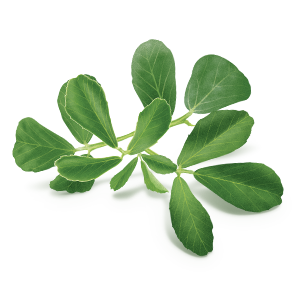
Fenugreek
The highly spicy fenugreek grows in Morocco, India, China, Africa, Australia and Europe. Its German name of Bockshornklee is based on its shape, which reminds people of billy goat horns (Bockshorn). In 795 A.D., Charles the Great ordered the cultivation of fenugreek in the monastery gardens and allowed it to spread throughout Europe as a result.We use fenugreek in
G
Green tea tencha
Tencha is among the most precious types of tea in Japan. Just 1% of the country's tea harvest consists of the intensive green tencha leaves that serve as the basis for the special matcha tea. Tencha achieves its extraordinary quality through an elaborate processing method – from ripening in the shade to drying in special drying ovens.We use green tea tencha in
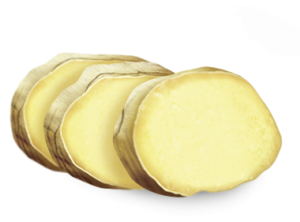
Ginger
Whether in the Christmas biscuits, as a curry mixture or in lemonade: The bulbous ginger is among the best-known spice plants in the world. For thousands of years, it has been cultivated in the tropical heat of eastern Asia. It gives many of our YOGI TEA®s a fruity-hot and aromatically spicy taste.We use ginger in

Ginseng root
Ginseng was long considered to be the "plant of the kings" since its extremely slow growth made it unaffordable for most people. It sometimes takes up to 170 years until the wild ginseng root - which came from North Korea - is completely ready for harvesting. Its taste is slightly bitter and tart.We use ginseng root in
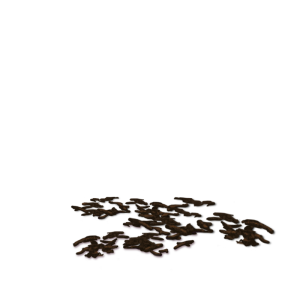
Green mate
The mate bush is also called "the green gold of the Indios". It grows in South America and belongs to genus of ilex. Green mate is used to describe the finest form of processing in which the smoky-earthy and fruity-sweet tasting harvest is fermented for about one month.We use green mate in
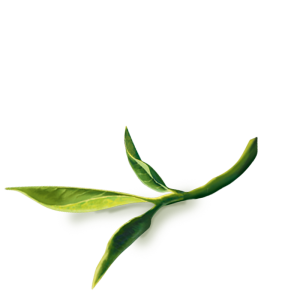
Green tea
Sencha, one of the types of green tea that we use, is also called the "royal variety of green tea." It unites the most positive traits of the green tea plant and has a fresh, distinctive taste.We use green tea in
Guarana
The guarana plant is primarily native to the Amazon region. The Indios say that it has the power of a high divine being within it. Like a vine, it grows up to 12 metres in height and belongs to the soapberry family. Its orange-red fruit tastes slightly bitter.We use guarana in
Guayusa
Guayusa is a member of the holly genus. Guayusa shrubs primarily grow in the Amazonian rainforest. Here they are cultivated at altitudes of up to 2,000 metres. There are hardly any wild guayusa shrubs left, as most of them are in the possession of the indigenous Quecha people. According to ancient legend, the shrubs are a gift from the gods to the indigenous people, enabling them to communicate with their ancestors.H
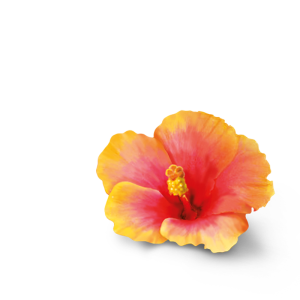
Hibiscus
Hibiscus, which is sometimes given other names such as the rose mallow, originally came from the tropics. In addition to its beauty, it is now also valued for its pleasantly fruity, sweet-sourish tasting flowers. Thanks to its conspicuously large flowers, it can now be found in many European gardens.We use hibiscus in
J
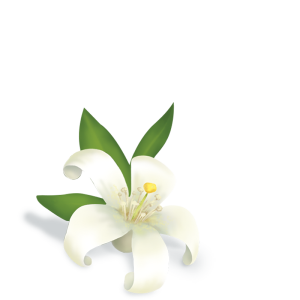
Jasmine green tea
Jasmin tea was already consumed in the age of the Chinese Song dynasty around 1200 A.D. Even today, it is still probably the most popular tea of China. Its soft, round taste of jasmine flowers is combined with the subtly tart taste of green tea.We use jasmine green tea in
Juniper berry
Most people know the little black juniper berries as a sourish-tart, slightly sweetish spice. Its German name of Wacholder is based on the old German word wauhal, which means "freshly alive/alert" and der means "tree".We use juniper berries in
K
Kombucha
Kombucha is a fermented beverage that is produced through the fermenting of strong teas with various types of yeast. It originally came from the North of China and was rediscovered in eastern Europe during the last century. Kombucha tastes sourish-sweet and refreshingly aromatic.We use dried kombucha drink in
L
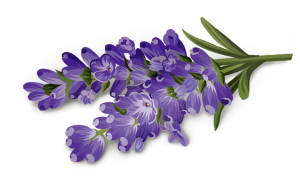
Lavender flowers
We can smell it everywhere around the Mediterranean: the tantalising fragrance of lavender. The plant of the mint family is native to these areas, even if it is now cultivated throughout the world because of its beautiful flowers. Lavender tastes tart-spicy and slightly bitter. It contains valuable essential oils.We use lavender flowers in
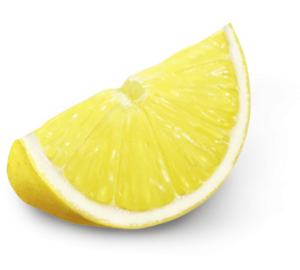
Lemon
To this today, it is still not clear where the lemon - a member of the citrus family - actually came from. It is presumed that its origins were in northern India. But due to its refreshing-sour taste, it has already been spread around the world for thousands of years.We use lemon in
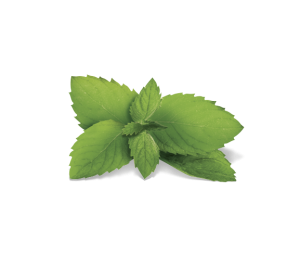
Lemon balm
Bees love its nectar-rich fruit, and human beings appreciate the spicy-fresh, lemony taste of its leaves. In the Middle Ages, lemon balm was so highly valued that it had to be cultivated in every European monastery garden per decree.We use lemon balm in
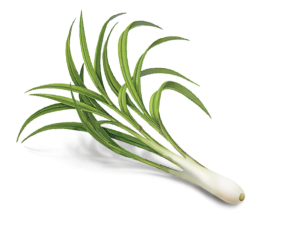
Lemon grass
Lemon grass contains essential oils and has a strong, lemony-fresh taste. The origins of this plant from the family of grasses that is primarily used in the Asian kitchen are still unclear to this day.We use lemon grass in

Lemon peel
A native of India, the peel of the lemon tree fruit has an aroma similar to its sourish fruit pulp. Slightly bitter and refreshingly fruity, it enriches Mediterranean meals, sweet dishes or herbal tea mixtures.We use lemon peel in
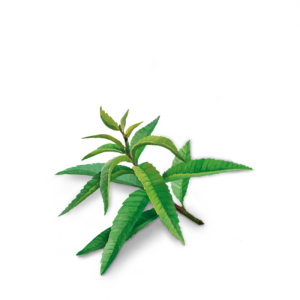
Lemon verbena
Lemon verbena was first introduced to Europe at the end of the 18th century. Its homeland is under the South American sun. The lemon verbena belongs to the vervain family and contains fine essential oils.We use lemon verbena in
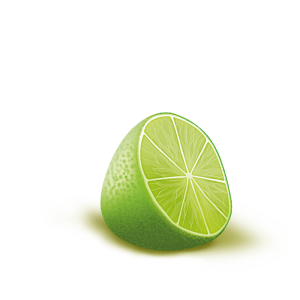
Lime
Limes are the intensive-sourish relatives of lemons. They were brought to southern Europe in the Middle Ages by the Crusaders. Their fruit pulp is so sour that the green citrus fruits are usually not eaten in their natural state but serve as a refreshing ingredient in beverages and foods.We use limes in
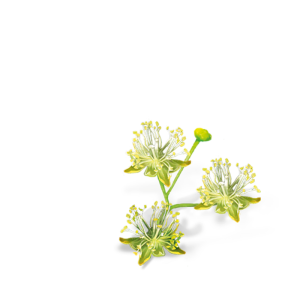
Linden flowers
Not only bees love them: Human beings have long valued the merits of lime blossoms. As a native to Europe, the tender flowers of the lime open in June. They exude an aromatic fragrance, taste slightly sweetish and contain valuable essential oils.We use linden flowers in
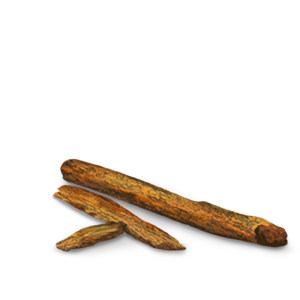
Liquorice
Liquorice has already been known since ancient times. Its sweetening power is about 50 times stronger than that of sugar. It tastes mild-sweetish and bitter-tart.We use liquorice in
M
Mace
Mace is the shell of the nutmeg. Whether dried or ground, it has been used as a seasoning for many thousands of years. Its aroma is somewhat more subtle than that of nutmeg. It tastes spicy-warm and is extremely popular especially in the colder season.We use mace in
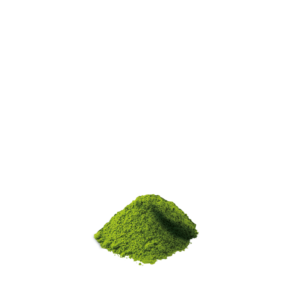
Matcha
Matcha tea, which was once reserved solely for the Japanese elite, is still among the finest types of tea. In an elaborate process, the finely ground matcha powder is made from the shaded leaves of the tencha green tea plant. It is bright green and tastes sweetish-fresh.We use Matcha in
Moringa
Originally from the Himalayas, the moringa tree is a fast-grower that already reaches the height of 8 metres during the first year. Based on its subtle spicy and slightly pungent taste, it is also known as the "horseradish tree".We use moringa in
Mullein
Not only its outer but also its inner values make the mullein a truly majestic occurrence. It grows as straight as a pole for up to two metres in height and bears brilliant yellow, mild-aromatic tasting flowers.We use mullein in
N
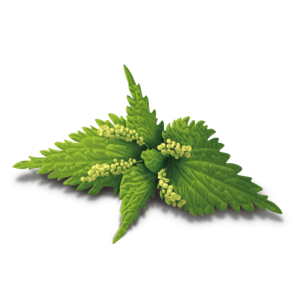
Nettle
The famous painter Albrecht Dürer saw it as "a gift from God": the nettle, which can reach a height of 1.5 metres. It grows in temperate zones throughout the world – at the wayside and along fences, as well as in meadows and gardens. Thanks to its pleasantly mild taste, it is an increasingly popular ingredient in foods, hot beverages or smoothies.We use stinging nettle in
Nutmeg
Mace is the shell of the nutmeg. Whether dried or ground, it has been used as a seasoning for many thousands of years. Its aroma is somewhat more subtle than that of nutmeg. It tastes spicy-warm and is extremely popular especially in the colder season.We use nutmeg in
O
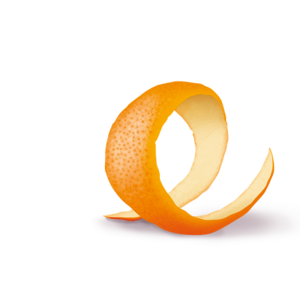
Orange peel
The orange is the most frequently cultivated citrus fruit in the world. It originally came from Asia and was only introduced to Europe in the 15th century. Its peel contains numerous essential oils and the taste is similar to the fruit pulp in its fruitiness but not quite as sweet and slightly bitter.We use orange peel in
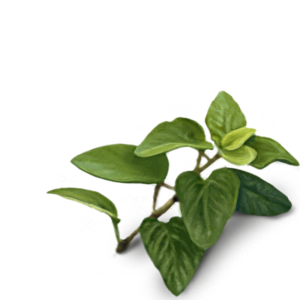
Oregano
Its full, slightly bitter-sharp aroma has made oregano an elemental component of Mediterranean cuisine. Found throughout all of Central Europe, as well as in North America and the Middle East, oregano is very widespread as a popular spice plant.We use oregano in
P
Parsley
Parsley is among the best-known herbs in the world. Depending on the variety, it has curly or smooth leaves with a mild-spicy and slightly peppery taste. Parsley is at home in the Mediterranean region and on the Canary Islands – as well as in many gardens and kitchens around the globe.We use parsley in
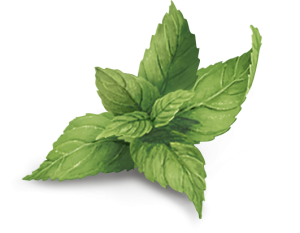
Peppermint
First discovered in 1696 and presumably created through the coincidental hybridisation of the water mint and wild mint, peppermint is now one of the most familiar plants in the world. Peppermint is extremely popular throughout the world due to its refreshing aroma. It has a mild, pleasant pungency.We use peppermint in
R
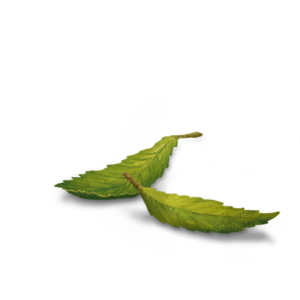
Raspberry leaves
The raspberry plant is a biennial bush, the berries of which should not be missing on any fruit plate. But not just the berries are worth harvesting: The green leaves of the raspberry bush have also been used since time immemorial to prepare hot beverages. Raspberry leaves taste slightly tart and delicately bitter.We use raspberry leaves in
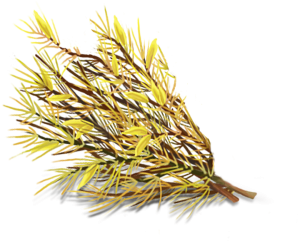
Rooibos
To this day, the redbush - which is also called rooibos - from the legume family is cultivated exclusively in the cedar mountains of South Africa. Growing to a height of two metres, the plant is only harvested once every year. Its leaves are made into rooibos tea, which is the mild-fruity and slightly sweet tasting national beverage of South Africa.We use rooibos in
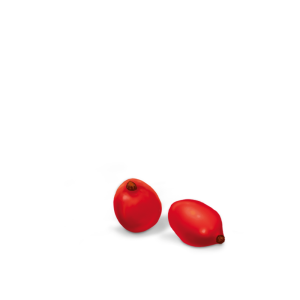
Rose hip
A member of the rose family, the rosehip has bright red fruit that contains many little nutlets. It thrives in the wild throughout all of Europe and Asia, preferable in a site with direct sunshine. Depending on when they are harvested, the taste of rosehips ranges from sourish-tart to slightly sweetishWe use rose hips in

Rose petals
Roses not only enjoy the greatest popularity because of their appearance. Their petals contain fine essential oils and smell just as wonderfully as they look: majestic. Their taste is subtly sweetish and finely aromatic.We use rose petals in
Rosemary
Rosemary was brought to Central Europe by monks in the 1st century A.D. It exudes an aromatic, strongly intensive fragrance and is a popular seasoning in Mediterranean cuisine. Its name is based on the Latin Ros marinus, which means something like the "dew of the ocean". Rosemary has a subtly spicy and slightly bitter taste.We use rosemary in
S

Sage
The name of this wonderfully fragrant plant from the Mediterranean region is based on the Latin word salvare. Due to its fresh-spicy and slightly bitter taste, sage was already worth its weight in gold in old China.We use sage in
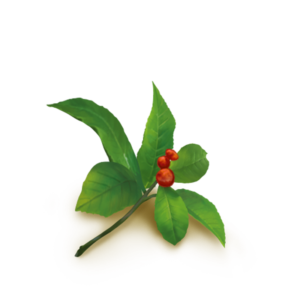
Schisandra berry
Schisandra berries are native to Russia, Korea and Northern China, where they are also known as Wu Wie Zi – the five flavour berries. The ball-shaped fruits are bright red and simultaneously have a sweet, sour, salty, bitter and spicy taste.We use schisandra berries in
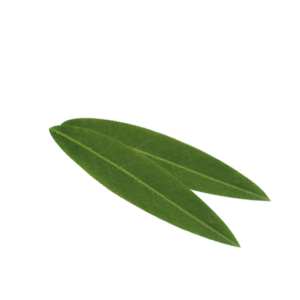
Senna
The Alexandrian Senna grows best in the warm, dry climates of North Africa and Arabia. In these countries, Senna is used as a Medicinal Plant since the 8th century. By now its laxative effect has even been proven scientifically.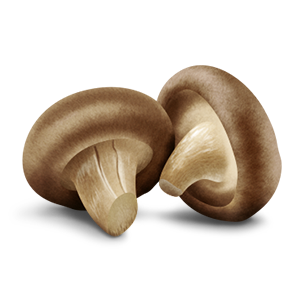
Shiitake mushroom
The shiitake mushroom has long since become more than a mere edible mushroom. It is now gaining a new importance served in different preparation forms, e.g. finely powdered, and is being reinterpreted as an ingredient in tea blends. It originates in Asia, where it is still often described as ‘xiānggū’, the fragrant mushroom. The shiitake mushroom is especially succulent and has an aromatic, slightly savoury aroma.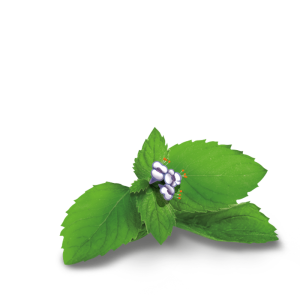
Spearmint
Spearmint is one of the best-known types of mint. It would be hard to imagine the kitchens and gardens of this world without it. The plant belongs to the mint family and grows up to half a metre in height. Its taste is refreshing and highly aromatic.We use spearmint in
Sunflower petals
With a height of up to five metres, the sunflower is seen as a symbol for the power of the Sun God in its homeland of South America. Its bright yellow flower petals taste mellow-mild.We use sunflower petals in
T
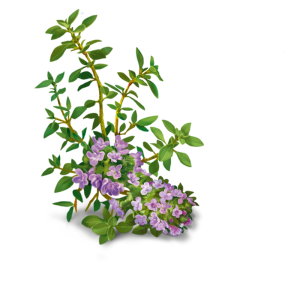
Thyme
Thyme is a plant of the mint family that has been valued by human beings for thousands of years as a spice. It grows mainly around the Mediterranean and has a powerful-hearty, slightly tart aroma.We use thyme in
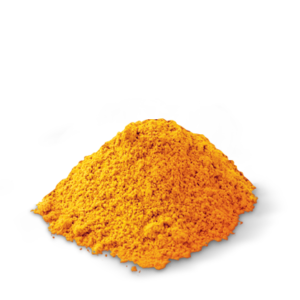
Turmeric root
Turmeric primarily grows in Asia and the Mediterranean region. It belongs to the ginger family and is one of the main components of curry powder. In India, the ginger-like and slightly savoury curcuma root was already one of the most important spices more than 5,000 years ago. It was even considered to be sacred.We use turmeric root in
V
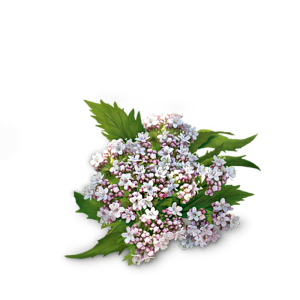
Valerian root
The garden valerian belongs to the honeysuckle family and grows primarily on the shore and edges of the forests in Europe, western Asia, the Far East and Siberia. Its delicate-fragrant flowers taste pleasantly aromatic and are bursting with valuable essential oils.We use valerian root in

Vanilla
The "queen of spices" is among the most popular aromas in the world. It belongs to the orchidaceae family and is native to Mexico and Central America. Its subtle taste and elaborate processing make the genuine vanilla into an especially precious spice plant.We use vanilla in
W
